Signs of discontent: Here is how and why QB Kyle McCord decided to leave Ohio State
Soon after succeeding Urban Meyer as Ohio State’s coach, Ryan Day settled on Kyle McCord to be his first quarterback recruit.
That might have been the last time the Day-McCord merger felt like a perfect marriage.
On Monday, McCord stunned the college football world by entering the NCAA’s transfer portal. The Buckeyes' starting quarterback finished the semester four days later and drove back to his family’s home in New Jersey to consider his options. He committed to Syracuse on Sunday.

McCord’s parting from Ohio State was finalized quickly. But it was a long time in the making.
More: What's next for Ohio State football's Harry Miller after he graduates?
The decision to leave was McCord’s. Ohio State wanted him to return for his senior season, sources told The Dispatch. He would have been the front-runner to start again in 2024.
But McCord wanted Day’s assurance that he would be the starter. Day declined to commit to that.
More: After reeling from Michigan loss, OSU's Jackson excited for Cotton Bowl in native Texas
Part of that was because the request came just days after a painful loss to Michigan. Everyone was still processing that defeat, and Day didn’t want to make a hurried decision.
Part of it also is that it’s simply anathema for coaches to guarantee anyone a starting job. Sometimes, though, such assurance doesn’t need to be said. Nobody questioned whether C.J. Stroud would again be the starter in 2022.
In McCord’s case, Day never fully embraced him as the quarterback he felt could lead the Buckeyes to championships. That was obvious in Day’s press conference following the Cotton Bowl announcement when he was non-committal when asked several times whether McCord would start against Missouri and in 2024.
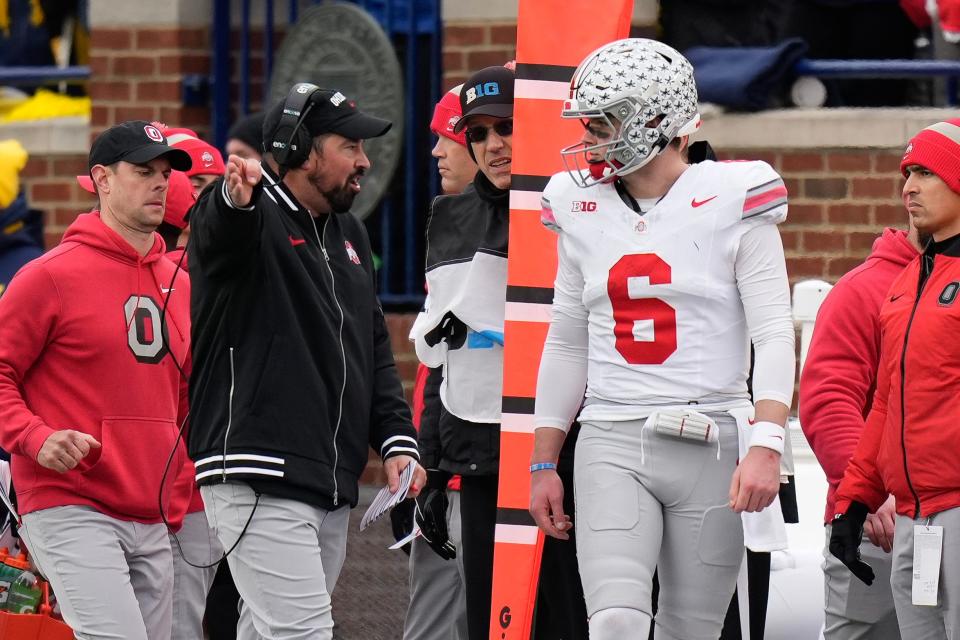
By then, sources said, the feeling among those at Ohio State was that McCord was considering transferring, though there was some doubt until the quarterback formally entered the portal the next morning.
The other factor in McCord’s decision was name, image and likeness compensation. Top quarterbacks in the transfer portal have gotten offers well over $1 million, a source said.
McCord was making substantially less than that in NIL money this season and wanted more, sources said, and OSU was not willing to facilitate that. The combination of not having the assurance of starting and uncertainty about NIL caused McCord to decide to look elsewhere.
McCord will be a senior in 2024. He had a chance to redshirt as a freshman. He played four games early in the season, including a start against Akron when Stroud was injured. Day then inserted him in a blowout of Michigan State in the next-to-last game of the regular season.
That fifth game made him ineligible for a redshirt, something that rankled the McCord side. With only one year of eligibility left, McCord believed he had to go somewhere where he knew he would start.
That was no guarantee at Ohio State. His competition this year with Devin Brown lasted longer than expected. McCord had been Stroud’s primary backup in 2022. Brown didn’t throw a pass as a freshman last year.
But the competition dragged on. In fact, Brown had pulled ahead until he had a couple of mistake-laden practices late in training camp.
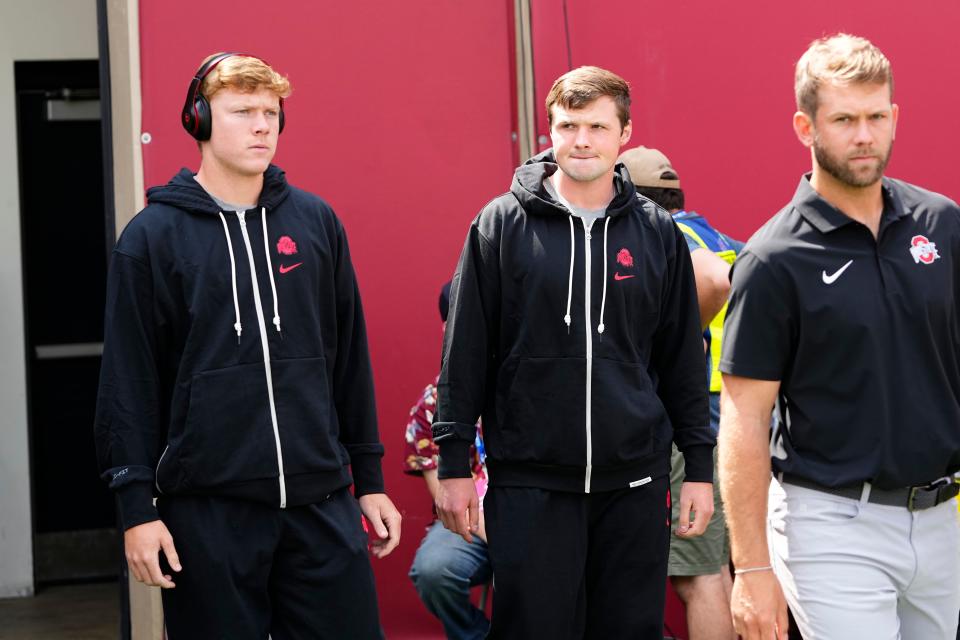
McCord’s greater consistency earned him the start against Indiana in the season opener, but Day didn’t declare him the winner of the competition until after the second game.
It was a sign that McCord hadn’t fully won over Day. Part of it was their differing personalities. McCord has a placid, even-keeled disposition. Day likes to see more fieriness in his quarterbacks.
In some ways, McCord was a victim of bad timing. His three predecessors – Dwayne Haskins Jr., Justin Fields and Stroud – were Heisman Trophy finalists. They each had an extraordinary trait. Haskins and Stroud were elite passers, gifted with strong, accurate arms and touch. Fields was almost unparalleled as a dual threat.
McCord lacks a transcendent skill. His arm is certainly good, and he makes some difficult throws, particularly to the sideline, look easy. And though he’s not a statue, he’s merely an adequate runner. He was less so after spraining his ankle against Notre Dame.
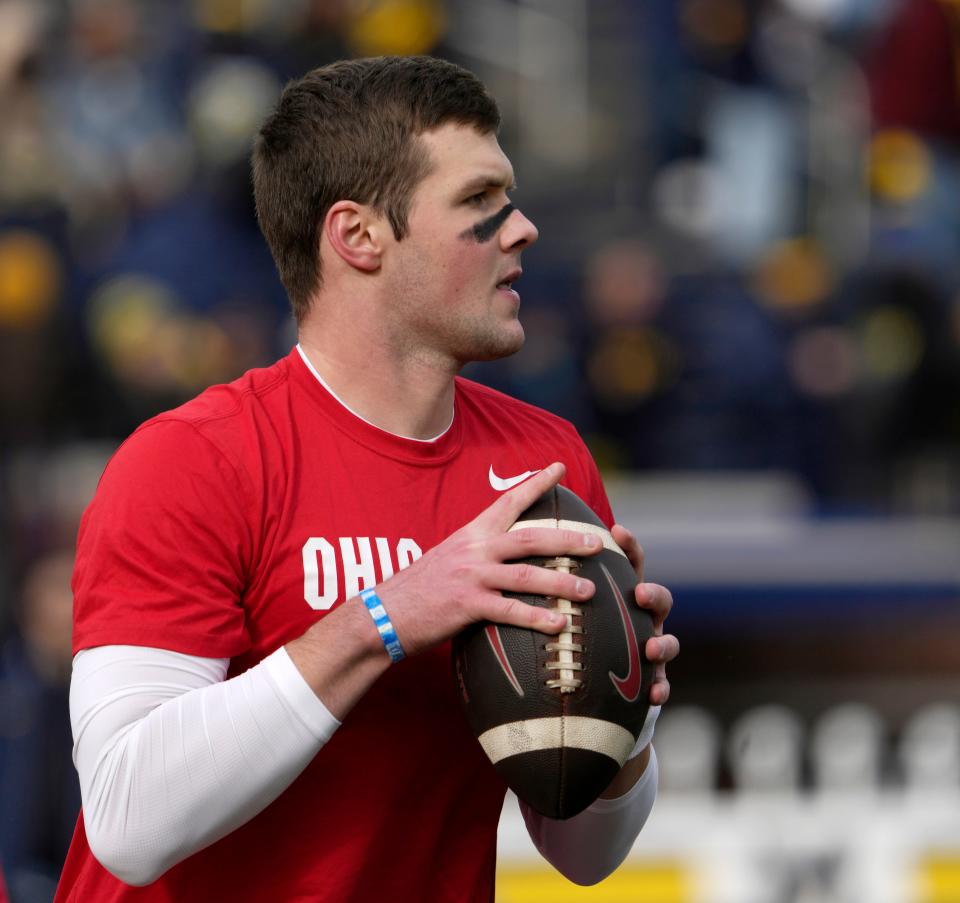
That game was McCord’s signature moment as a Buckeye. He led Ohio State to a last-second, game-winning touchdown with several clutch throws to keep the drive alive. But he also escaped disaster on that final possession when a Notre Dame defender dropped what would have been a game-clinching interception.
McCord was a mixed bag like that all year. He was good enough for Ohio State to win its first 11 games. He threw for 3,170 yards and 24 touchdowns and only six interceptions with a 65.8 completion percentage.
But he was prone to slow starts, and there wasn’t a sense he elevated the play of his teammates.
It didn’t help that the Buckeyes’ offensive line struggled most of the year and that several of Ohio State’s elite skill-position players – receiver Emeka Egbuka, tight end Cade Stover and running back TreVeyon Henderson – missed time with injuries. But he also was blessed with the best receiver in the country, his St. Joseph’s Prep high school teammate Marvin Harrison Jr., who can make any quarterback look good.
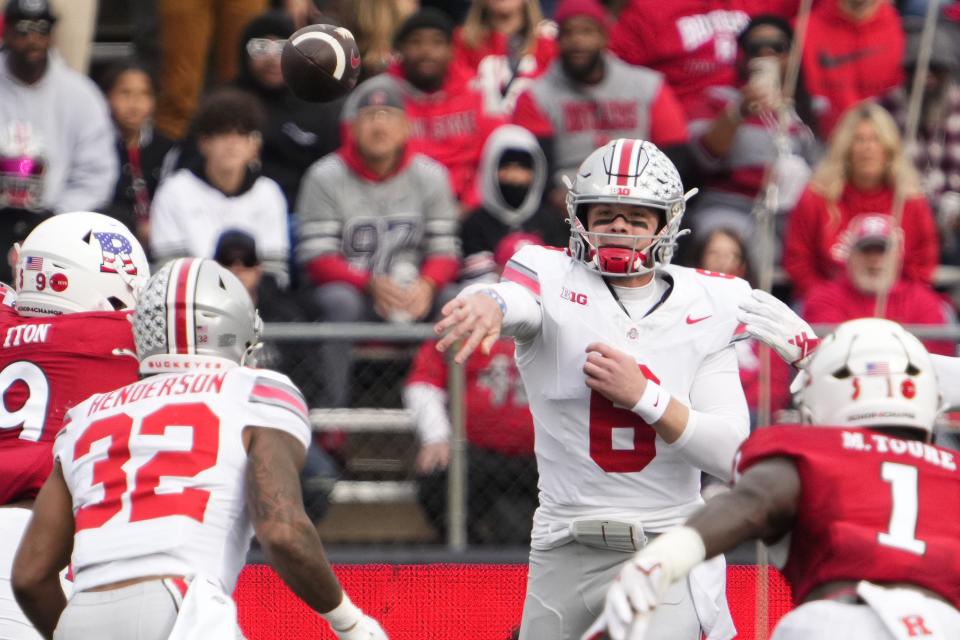
The bottom line is that Ohio State’s offense tended to sputter as much as it clicked. The Buckeyes are averaging 32.8 points per game. They averaged more than 40 points every other year under Day.
It was telling that Day’s public praise of McCord was usually muted – not critical necessarily, but not effusive, either.
It took time for Day to embrace Stroud fully as well. Day coaches his quarterbacks hard, believing the crucible will make them better. Stroud said he thought Day disliked him his freshman year, and the feeling was mutual. But when Stroud blossomed into a star, Day often offered glowing compliments.
But McCord was in his third year, and that never really happened. McCord couldn’t help but notice that, and it contributed to his eventual departure.
Had Ohio State beaten Michigan, McCord would be leading the Buckeyes into a College Football Playoff semifinal, and it's likely he wouldn't have considered transferring.
But that didn’t happen, and a third straight loss to the Wolverines felt exponentially painful. The contrast between McCord and Michigan quarterback J.J. McCarthy in the game was evident. Day also recruited McCarthy before settling on McCord, and McCarthy has been a Buckeye killer the past two years.
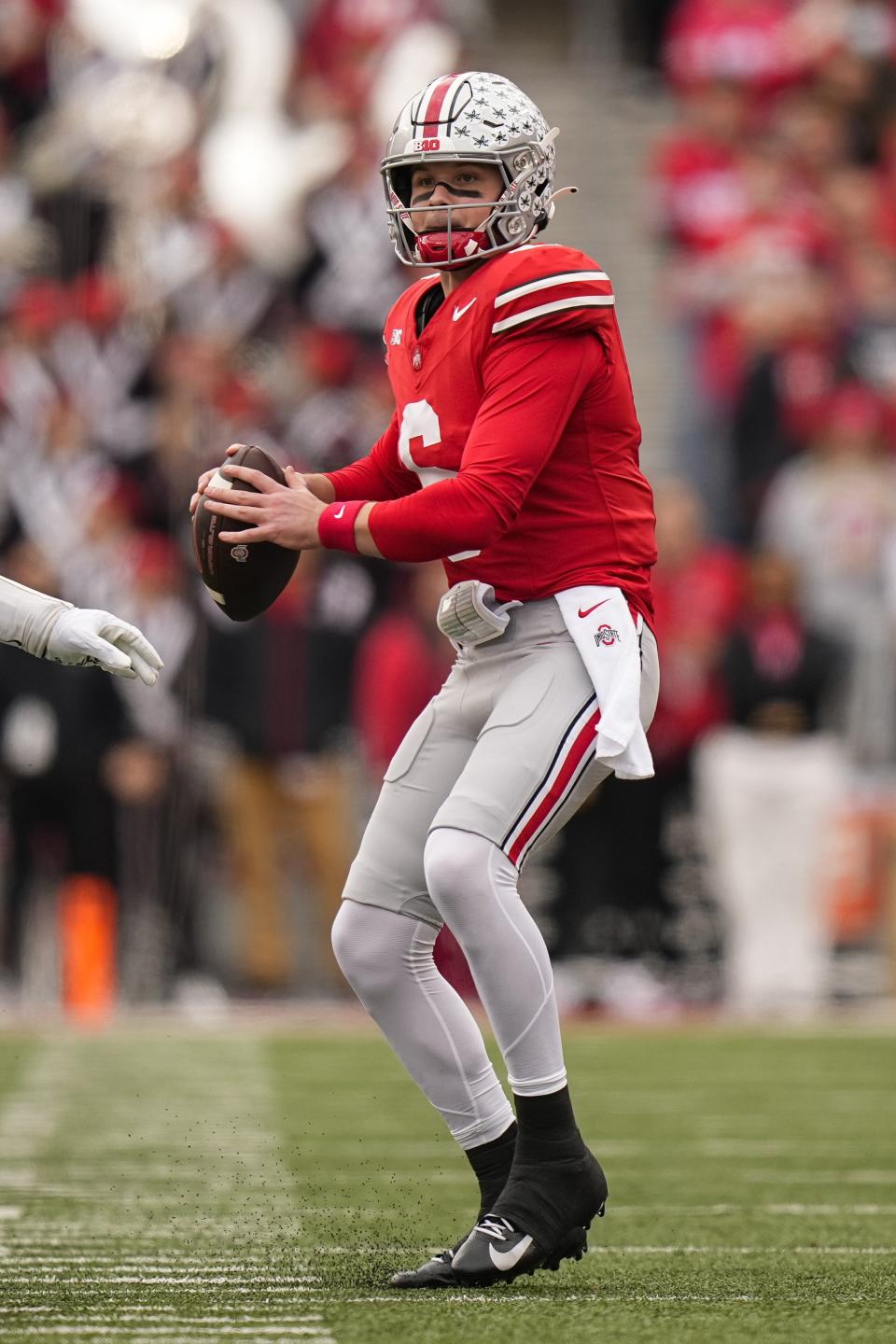
McCarthy was brilliant against the Buckeyes last month, repeatedly improvising with his legs to make unlikely plays when flushed out of the pocket. It’s a skill increasingly necessary in college football.
That’s not McCord’s forte. It should be noted, though, that McCord played the Michigan game hobbled with an ankle sprain. He was injured late in the first half against Minnesota the week before when Day elected not to run the clock out with the ball deep in OSU territory.
McCord threw two interceptions against Michigan, though arguably neither was his fault, especially the final one when he was hit as he released the ball.
It was the last pass McCord would throw as a Buckeye.
Get more Ohio State football news by listening to our podcasts.
This article originally appeared on The Columbus Dispatch: Here is how and why QB Kyle McCord decided to leave Ohio State

